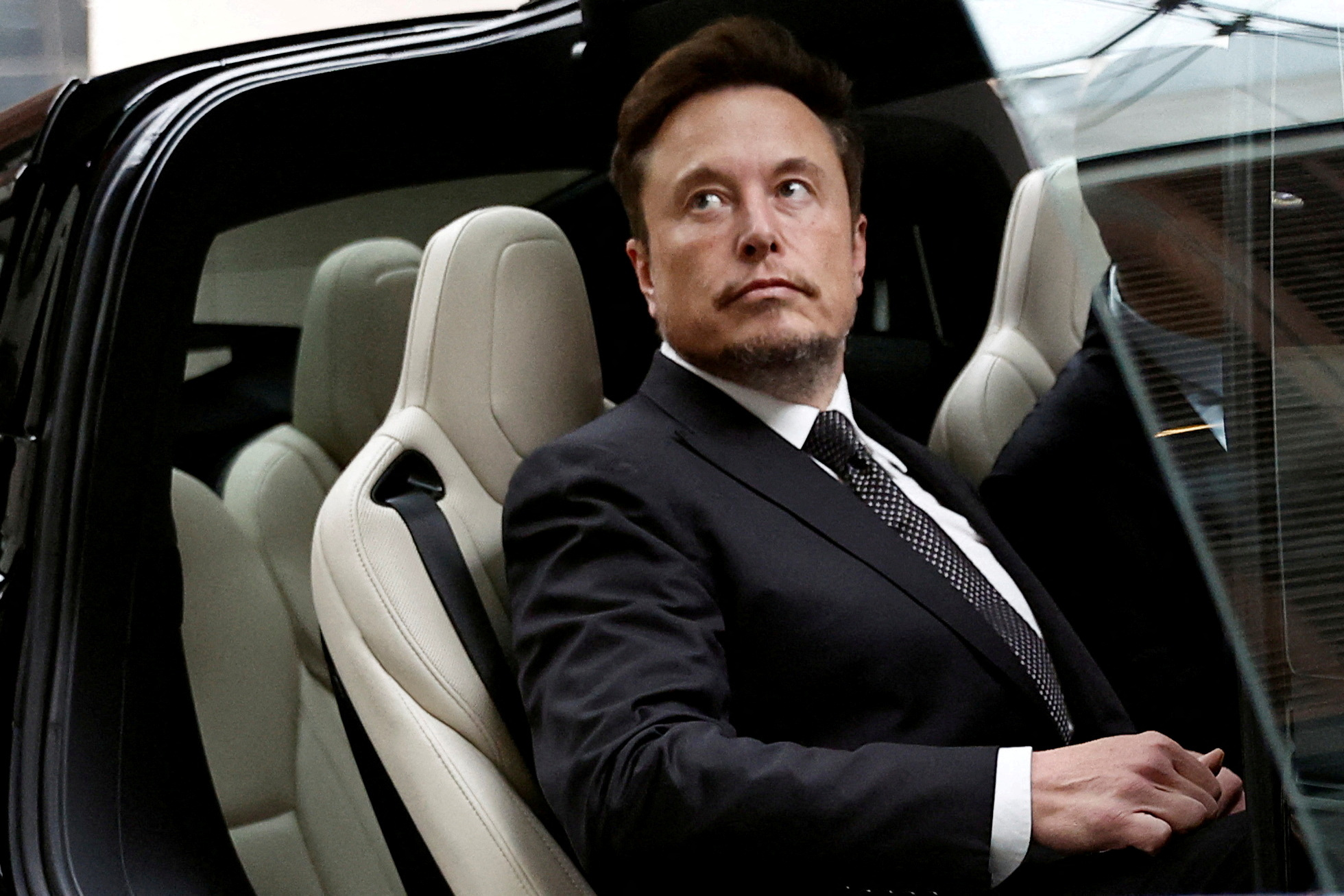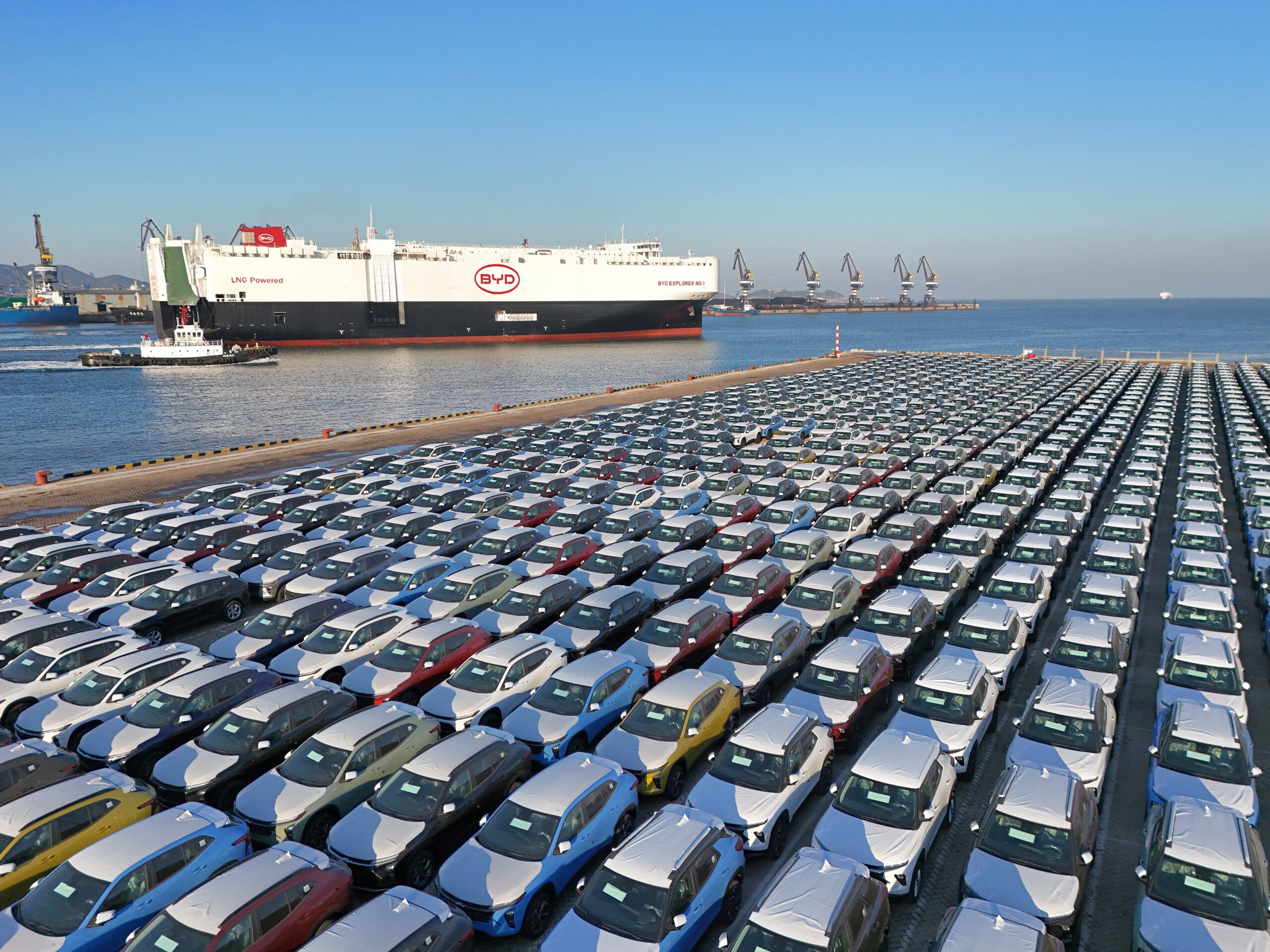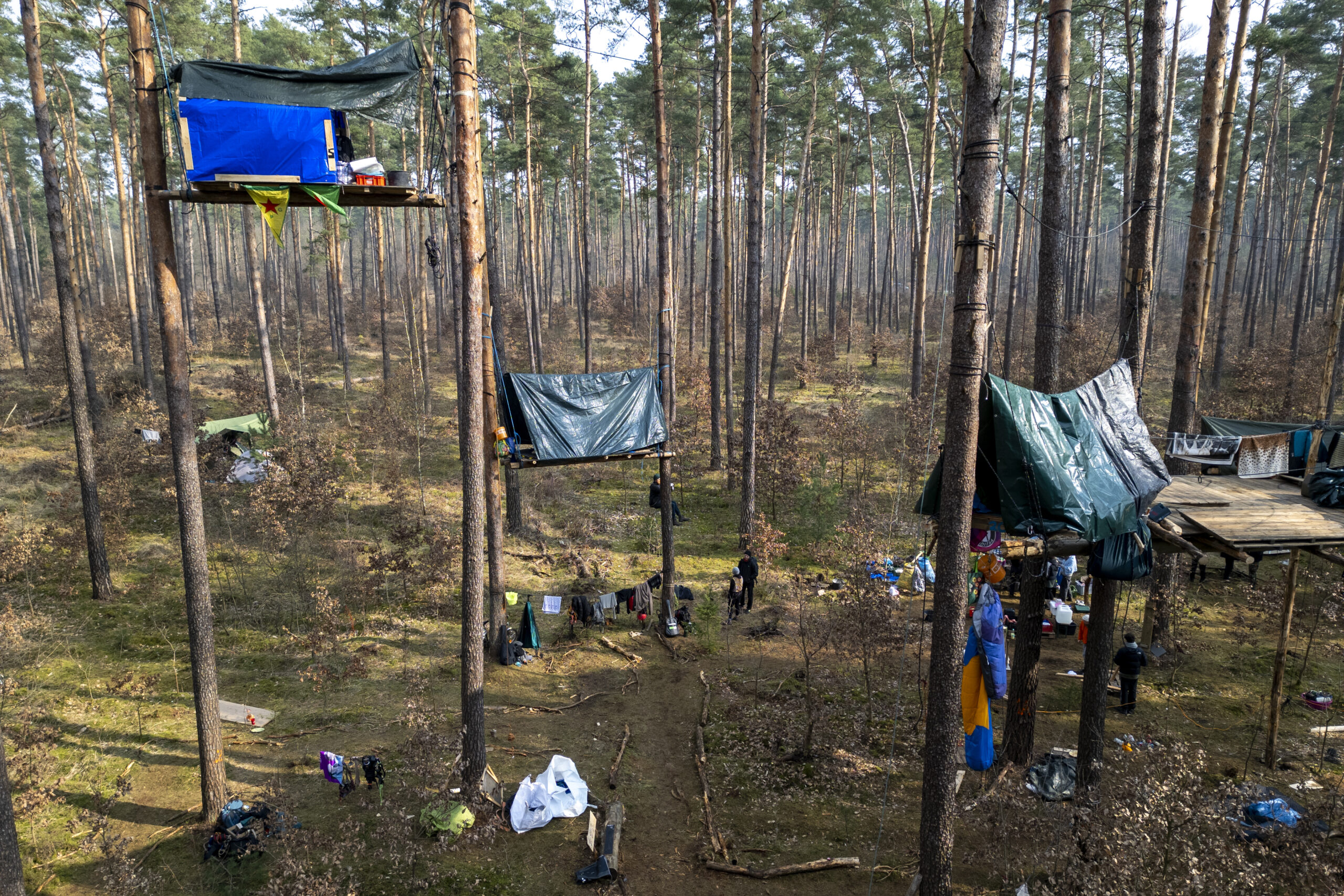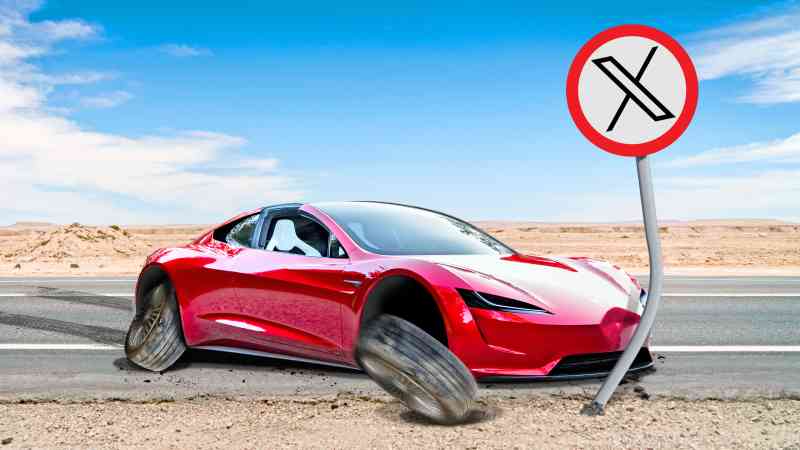Trouble at Tesla? The headache facing Elon Musk
With multi-storey tree houses and signs warning “Go Vegan! Eat Elon Musk instead”, Grunheide has become the site of a showdown.
A group of colourfully dressed environmental protesters have erected makeshift homes high above the ground to protest against the expansion of Tesla’s flagship European gigafactory, 35 kilometres south-east of central Berlin. Already bigger than Monaco, Musk wants to make it three times the size.
Julian Smaluhn, 38, tall with long ginger hair and beard, uses ropes and carabiners to get into his tree house. “Changing the type of cars won’t help us — going from combustion engines to electric vehicles (EVs) won’t solve our problems. Is Elon building cars that we need? No, he’s building heavy cars with fast acceleration,” he said.
The protests in Germany are but one headache for Musk’s EV giant. Even Tesla’s most ardent supporters would concede that the company is at a crossroads as Musk grapples with falling sales and an influx of cheap Chinese-made EVs. And with a large part of his $200 billion net worth wrapped up in Tesla stock, it is a personal challenge for Musk.
Tesla’s shares have shed about a third of their value this year alone and are swapping hands for about $170 — a far cry from the more than $400 they were fetching in November 2021. The slump has resulted in a feeding frenzy for hedge funds betting against the company’s fortunes. Short-sellers — who profit from bets on falling share prices — have made profits of $6.6 billion since the start of 2024, according to analytics firm Ortex.
Per Lekander, who runs a $1.6 billion hedge fund called Energy Dynamics, is among those betting that more troubles are on the horizon. “What is this company going to do over the next five years? It has no growth. I think volumes will keep shrinking as competitors steal market share. I really think they are toast,” he said.
Lekander’s remarks, made this weekend, sound all the more prophetic as Tesla told staff on Monday that it was laying off 10 per cent of its workforce. “We have done a thorough review of the organisation and made the difficult decision to reduce our headcount by more than 10% globally,” said Musk in an email to staff.“There is nothing I hate more, but it must be done. This will enable us to be lean, innovative and hungry for the next growth phase cycle.”
The job cuts follow Tesla shocking investors by announcing it had delivered just 386,810 vehicles during the first three months of 2024. Not only was this down 9 per cent on the previous year, but it was 13 per cent below the estimates of Wall Street analysts.
Tesla sought to explain the first-quarter sales slump by blaming it on disruption to supply chains due to Red Sea shipping attacks. “This was a tough quarter for everyone,” Musk said.
But while supply chain disruption has played its part, Tesla’s troubles run deeper.
In recent years, the EV market was largely defined by supply constraints such as the shortages of computer chips from the Far East that meant Tesla customers had to wait months for their vehicles. Nowadays, growth is constrained by the availability of customers who want to buy them.
“There is no denying that the demand environment has deteriorated,” said Ben Kallo, a senior research analyst at Baird financial services.

There are a number of reasons why. First, large parts of the West have hit the end of the “early adopters’’ phase. Those that wanted to be the first to swap to electric cars have now done so.
Convincing the next tranche of drivers to switch to EVs will be difficult, according to Mike Hawes, chief executive of UK trade body the Society of Motor Manufacturers & Traders. “To move the UK’s EV transition from the early adopter phase to mass market, we need to give consumers confidence to invest, which means addressing concerns around cost and charging,” he said.
Charging remains a key concern for many would-be EV drivers. Building charging infrastructure has been bogged down in planning bureaucracy and a lack of grid capacity.
Meanwhile, the paring back of EV sales incentives across the West is stymieing demand. Germany shut its subsidy scheme last December after paying out €10 billion in grants since 2016. In France, the government cut subsidies for purchasing an EV from €5,000 to €4,000 for those earning higher incomes.
The impact of these curbs was laid bare in figures from Volkswagen last week. The German carmaking giant, which also owns Audi and Porsche, said that its sales of EVs in Europe plunged by 24 per cent in the first three months of the year.
Compounding sluggish demand for EVs is the fallout from the global economic slowdown. Higher interest rates have made cars bought on credit more expensive. Drivers that are looking at buying an EV are more likely to opt for one of a torrent of cheaper Chinese marques than a Tesla.
In China itself, the world’s largest EV market, Tesla sales are floundering. Figures released last week by the China Passenger Car Association revealed Tesla’s share of domestic EV sales fell to 7.7 per cent in March, compared with 12.4 per cent a year earlier.

Chinese EV manufacturers such as BYD, SAIC, and Geely benefit from huge state subsidies, allowing them to undercut foreign rivals on price. A recent report published by the Kiel Institute for the World Economy in Germany estimated that China’s overall subsidies range between three to nine times that of other OECD countries such as the US or Germany.
It is not just Chinese manufacturers that are eating Tesla’s lunch. Though Volkwagen struggled in Europe, its EV sales in China rose 91 per cent from a low base in the first quarter, in part thanks to price cuts. “Volkswagen Group China’s e-offensive is taking effect,” said Ralf Brandstätter, the group’s head for China.
The threat posed by Chinese car marques has not been lost on Musk.
In January, the billionaire said Chinese carmakers would enjoy “significant success” around the world if import tariffs were not imposed. “Frankly, I think if there are no trade barriers established, they will pretty much demolish most other car companies in the world,” he said.
Tesla has some protection at home from Chinese imports. A 27.5 per cent tariff on Chinese-made cars, introduced by Donald Trump, will insulate it in the US. Though, with some Chinese EVs selling for as little as $10,000, they may still prove more economical.
The UK is a good example of what happens under a laissez-faire approach — one that is more prevalent across the rest of the world. Tesla sold 34,853 cars in this country in 2021, rising to 54,622 the following year and falling to 49,571 in 2023, according to the SMMT.
Compare that with MG, a company with rich British heritage but is now owned by Chinese state-controlled company SAIC Motor. It sold 10,455 EVs in 2021, 16,607 in 2022 and 30,731 last year. Based on this trajectory, MG is on course to overtake shrinking Tesla in the UK this year.

Tesla is also hampered by stratospheric expectations. Despite its stock market sell-off, the company still has a market valuation of more than $500 billion. That is ten times the value of traditional car makers such as Ford and General Motors, which both hover around the $50 billion mark.
The discrepancy is primarily because many investors see Tesla as a tech company that is exploring cutting-edge ideas rather than a vehicle manufacturer. Among Tesla’s high-tech bets are Dojo, a video processing and recognition supercomputer; Optimus, a general purpose robot that leverages artificial intelligence; and Robotaxi, a driverless taxi.
The dream of Tesla as a tech firm has been stoked by Musk, who said recently: “Tesla is arguably the biggest robot maker in the world. It’s just a four-wheeled robot.”
Tesla has lavished a small fortune on a full self-driving (FSD) programme, which is edging ever closer to reality.
“We’ve talked about autonomous cars for about five or ten years. I think that there is a good chance we have reached that moment,” said Tom Slater, who runs Scottish Mortgage Investment Trust, a £12 billion fund that is listed on the London Stock Exchange. Slater is an avowed fan of Musk and has a stake worth hundreds of millions of pounds in Tesla.
“Elon Musk has said that all new Teslas sold in the US must install and demonstrate full self-driving to the buyers. I think that’s a pretty big statement of confidence in where the technology has got to.”
One of the biggest threats to Tesla’s automated driving technology was a lawsuit brought by the family of an Apple engineer who was killed in 2018 when a Model X hit a highway barrier while operating on autopilot. A trial that was due to go ahead last week was called off at the eleventh hour after Tesla agreed to settle the case for an undisclosed sum. And this weekend, it announced it was cutting prices to FSD subscriptions in the United States and Canada from $99 to $79 a month amid fears of softening demand and price competition.
Lekander, whose fund is shorting Tesla — betting that the company’s shares will fall further — dismisses Musk’s tech as “dream projects”.
Nearly all the value in Tesla is currently in car manufacturing, he said. And this would be “trashed” by Chinese rivals.

Lekander’s fund was spun out of Lansdowne Partners, one of Mayfair’s oldest and best-known hedge funds. Bankers have mooted potential talks with the billionaire, he said. Could Musk change Lekander’s mind? “It is too late. He was in a dream situation three years ago. He could have literally cornered this industry, but now he can’t.”
One way that Musk is fighting back against Chinese manufacturers is with the Model 2, a mass-market vehicle with a planned price of $25,000. Production was reportedly due to begin in the middle of 2025 and was expected to represent the majority of Tesla’s output within five years.
Yet the future of the Model 2 has been flung into doubt. The Reuters news agency reported earlier this month that bosses had cancelled the project and Tesla would focus its attention on Robotaxis, which would be built on the same production lines. “Reuters is lying (again),” was the curt response from Musk.
Nevertheless, fears persist that the Model 2 could be scrapped. “If the high-volume Model 2 is removed, this implies very limited volume growth through the end of the decade,” said Dan Levy, an analyst at Barclays.
The prospect of more work does not fill staff working at Grunheide with glee as they file out of the Berlin gigafactory past the wooded protesters.
Sepehr, 38, from Iran, has worked there for two years and looks shattered. “There are many problems — you only earn €2,400 monthly doing night shifts, €2,200 for days: it’s not enough money. Previously, there were 20 people making the back of the seats, but now it’s 13 and usually two are on holiday or sick. We’re often doing it with nine people.”
With the EV market slumping and his own workers dissatisfied, Musk’s plans for world domination may be running out of road, too.




Post Comment